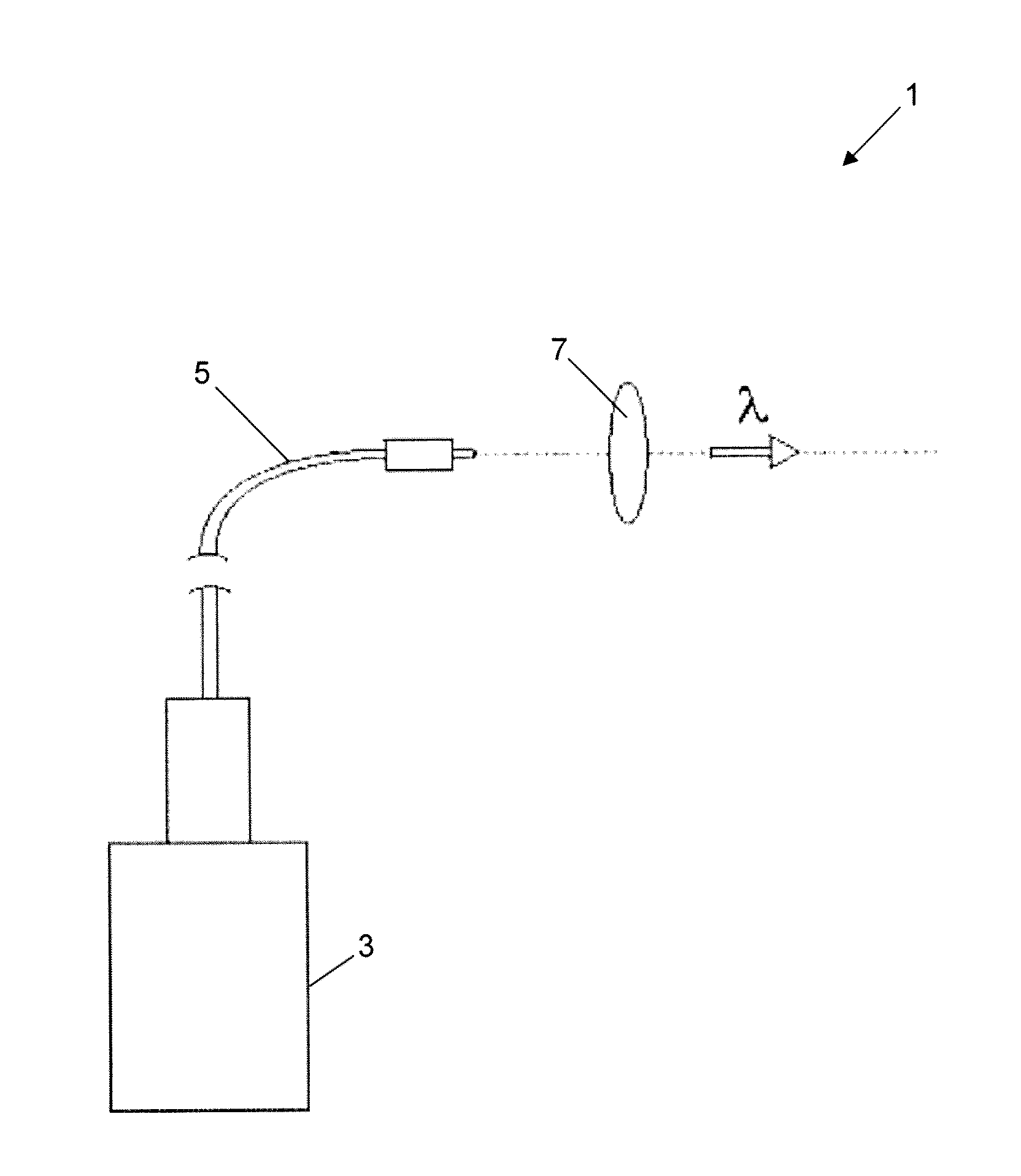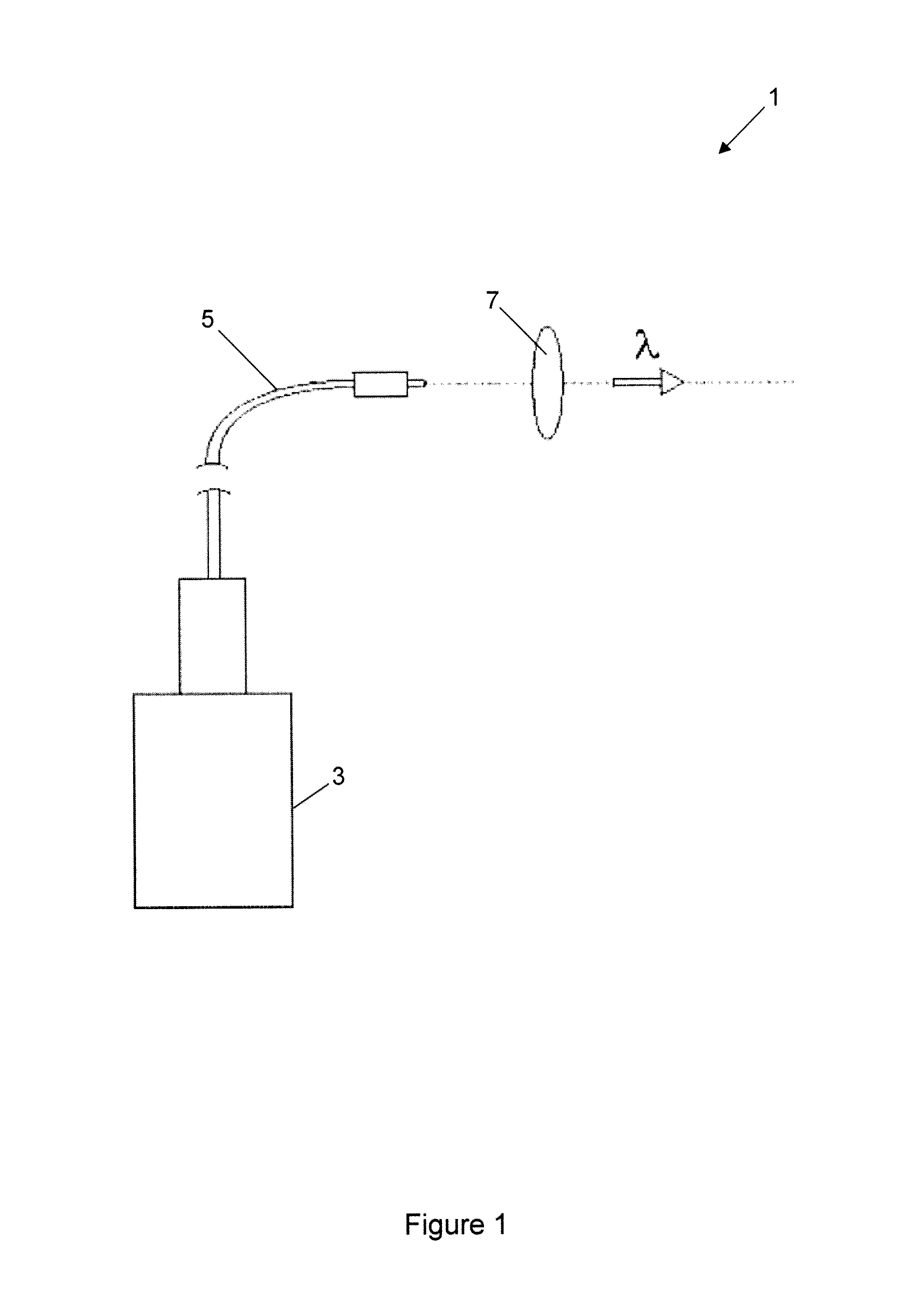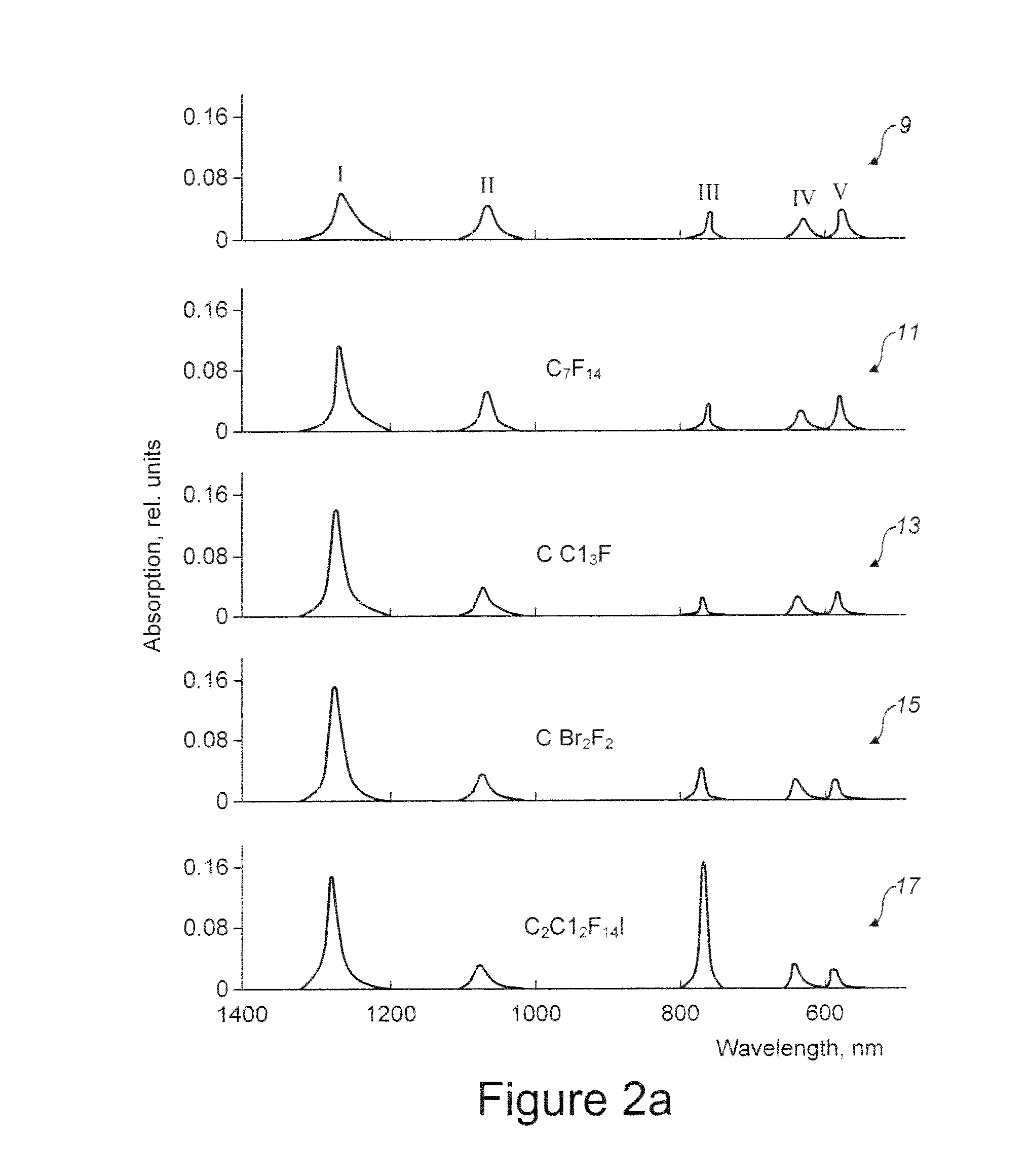Quantum-dot laser diode
a laser diode and quantum dot technology, applied in the field of laser technology, can solve the problems of time-consuming process, limited use of pdt, and low penetration depth of activating light, and achieve the effect of compactness, easy transportation, and small physical siz
- Summary
- Abstract
- Description
- Claims
- Application Information
AI Technical Summary
Benefits of technology
Problems solved by technology
Method used
Image
Examples
experimental analyses and examples
[0120]Unless otherwise indicated, commercially available reagents and standard techniques in molecular biological and biochemistry were used. General purpose reagents were purchased from Sigma-Aldrich Ltd (Poole, Dorset, UK).
[0121]To exemplify the applicability of the PDT methods and apparatuses of the invention for the treatment of target cells, the effect of NIR irradiation on target cells and tissues was assessed. The Examples demonstrate that a semiconductor laser diode of the invention is able to photoactivate oxygen radicals present within and / or in proximity of the target cells to cause disturbances in cellular processes and ultimately cell death.
Near Infrared Quantum Dot Laser
[0122]A fibre coupled InGaAs / InAs quantum dot laser diode (QD LD; Innolume GmbH) (NA=0.22, fibre core diameter=105 μm, laser diode chip length=3 mm) in continuous wave regime was used as an irradiation source. The QD gain structure was grown on an n+ GaAs (100) substrate by molecular beam epitaxy. The l...
example 1
Measurements of Singlet Oxygen in Anoxia Air-Saturated Solution
[0128]Trap of singlet oxygen 98% naphthacene (Sigma-Aldrich) was used as a substrate for photo-oxygenation by means of direct laser excitation of molecular oxygen (Hallwell & Gutteridge, Free radicals in biology and medicine, Oxford Uni. Press, 2007; Zolotovskaya et al., (2009) ECBO'09, Munich, Germany, ThB4; Krasnovsky et al., (2003) Biochem., 68, pp 1178-1182; and Krasnovsky & Ambartsumian (2004) Chem. Phys. Lett. 400: pp 531-535). The rate constant of singlet O2 reactions with naphthacene was determined to be approximately 106 M−1s−1. Since naphthacene is not a water-soluble compound, carbon tetrachloride (CCl4, Fluka) was chosen as a solvent medium.
[0129]The absorption spectrum of naphthacene is shown in FIG. 5 (inset). In CCl4, the main absorption maxima of naphthacene is located at approximately 474 nm. It should be noted that naphthacene demonstrates an absence of any resolvable absorption in the vicinity of 1270 ...
example 2
[0135]This Example demonstrates laser-induced oxidative stress and the production of ROS on a HaCaT immortalised skin keratinocyte cell line.
[0136]Cells of the spontaneously immortalised skin keratinocyte line, HaCaT (Boukamp et al., (1988), J. Cell. Biol. 106, pp 761-771), were used in the fluorescence assay. HaCaT immortalised skin keratinocytes closely resemble normal keratinocytes in their growth and differentiation characteristics, both in culture and in surface transplants. This cell line retains remarkable ability for normal differentiation even after multiple passages (>140) with stable genetic balance over extended culture periods, without shifting to the tumorigenic phenotype.
[0137]Cells were cultured for use as described above. After disaggregation, cells were centrifuged at 1200 rpm for 2 min at 4° C., washed and re-suspended in bath solution and temporarily stored on ice.
[0138]The cells were loaded with dihydroethidium, DHE (5 μM; Sigma) in modifie...
PUM
 Login to View More
Login to View More Abstract
Description
Claims
Application Information
 Login to View More
Login to View More - R&D
- Intellectual Property
- Life Sciences
- Materials
- Tech Scout
- Unparalleled Data Quality
- Higher Quality Content
- 60% Fewer Hallucinations
Browse by: Latest US Patents, China's latest patents, Technical Efficacy Thesaurus, Application Domain, Technology Topic, Popular Technical Reports.
© 2025 PatSnap. All rights reserved.Legal|Privacy policy|Modern Slavery Act Transparency Statement|Sitemap|About US| Contact US: help@patsnap.com



